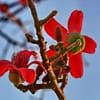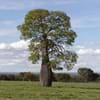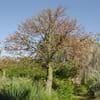Life Span
Perennial
Perennial
Origin
Mid-Atlantic United States, Southeastern United States, Central United States, South-Central United States
Europe, Turkey
Types
not available
Not available
Habitat
bottomlands, Depression on prairies, ditches, Floodplains, Riverbanks, stream banks, Swamps
hedge rows, Woodlands
USDA Hardiness Zone
4-9
2-9
AHS Heat Zone
9-1
Not Available
Sunset Zone
1a, 1b, 2a, 2b, 3a, 3b, 4, 5, 6, 7, 8, 9, 10, 11, 12, 13, 14, 15, 16, 17, 18, 19, 20, 21, 22, 23, 24
Not Available
Habit
Oval or Rounded
Upright/Erect
Flower Color
Yellow, Brown
Yellow, Green, Orange Red
Flower Color Modifier
Bicolor
Bicolor
Leaf Color in Spring
Green, Light Green
Light Green
Leaf Color in Summer
Green, Light Green
Dark Green
Leaf Color in Fall
Yellow, Light Yellow, Tan
Lemon yellow, Yellow green, Orange Red
Leaf Color in Winter
Not Available
Not Available
Leaf Shape
Oval with a pointed tip and fine teeth along their edges
Ovate
Plant Season
Spring, Summer, Fall, Winter
Summer, Fall, Winter
Sunlight
Full Sun, Partial Sun
Full Sun, Partial Sun
Type of Soil
Clay, Loam, Sand
Loam
The pH of Soil
Acidic, Neutral
Acidic, Neutral
Soil Drainage
Average
Average
Tolerances
Wet Site, Pollution, Soil Compaction
Drought, Pollution, Variety of soil types
Where to Plant?
Ground
Ground
How to Plant?
Seedlings
Grafting, Seedlings
Plant Maintenance
Low
Low
Watering Requirements
Requires a lot of watering, Requires regular watering
Average Water Needs, Do Not over Water, Keep the ground moist but not water-logged, Requires regular watering
In Summer
Lots of watering
Lots of watering
In Spring
Moderate
Moderate
In Winter
Average Water
Average Water
Soil pH
Acidic, Neutral
Acidic, Neutral
Soil Type
Clay, Loam, Sand
Loam
Soil Drainage Capacity
Average
Average
Sun Exposure
Full Sun, Partial Sun
Full Sun, Partial Sun
Pruning
Prune in the late winter or spring, Remove dead or diseased plant parts, Shape and thin as needed
Cut or pinch the stems, Remove damaged leaves, Remove dead branches, Remove dead leaves
Fertilizers
All-Purpose Liquid Fertilizer, No need to fertilize every year
All-Purpose Liquid Fertilizer, Nitrogen, Water soluble fertilizers
Pests and Diseases
Aphids, Red blotch, Sawfly Larvae
Aphids, Caterpillars, Powdery mildew
Plant Tolerance
Pollution, Soil Compaction, Wet Site
Drought, Pollution, Variety of soil types
Flowers
Showy
Insignificant
Flower Petal Number
Not Available
Not Available
Fragrant Leaf
No
Not Available
Foliage Texture
Medium
Medium
Foliage Sheen
Matte
Glossy
Attracts
Not Available
Birds, Not Available
Allergy
Asthma
Asthma, conjunctivitis, Pollen, Rhinitis
Aesthetic Uses
Showy Purposes
Cottage Garden
Beauty Benefits
Not Available
Skin irritation, Stops hair loss
Environmental Uses
Erosion control, Wildlife
Air purification, Shelter for wildlife
Medicinal Uses
No Medicinal Use
Cold, Cough, Diarrhea, Hair Loss, Headache, hemorrhoids, Rheumatism, Sore throat
Part of Plant Used
Whole plant
Leaves
Other Uses
used for making roof trusses, poles, joists, piles, Used in construction, Used in Furniture
Cosmetics, Used as Ornamental plant, Used for its medicinal properties
Used As Indoor Plant
No
No
Used As Outdoor Plant
Yes
Yes
Garden Design
Feature Plant, Shade Trees
Feature Plant, Shade Trees
Botanical Name
BETULA nigra
Carpinus betulus
Common Name
River Birch
Common Hornbeam, European Hornbeam
In Hindi
River Birch
हानबीन
In German
Fluss Birch
Hainbuche
In French
Birch river
charme
In Spanish
river Birch
carpe
In Greek
ποταμός Birch
γαύρος
In Portuguese
river Birch
choupo-branco
In Polish
Rzeka Birch
grab
In Latin
Betula
Item carpinus
Phylum
Magnoliophyta
Magnoliophyta
Class
Magnoliopsida
Magnoliopsida
Family
Betulaceae
Betulaceae
Clade
Angiosperms, Eudicots, Rosids
Angiosperms, Eudicots, Rosids
Tribe
Not Available
Not Available
Subfamily
Not Available
Coryloideae
Number of Species
Not Available
Season and Care of River Birch and Hornbeam
Season and care of River Birch and Hornbeam is important to know. While considering everything about River Birch and Hornbeam Care, growing season is an essential factor. River Birch season is Spring, Summer, Fall and Winter and Hornbeam season is Spring, Summer, Fall and Winter. The type of soil for River Birch is Clay, Loam, Sand and for Hornbeam is Loam while the PH of soil for River Birch is Acidic, Neutral and for Hornbeam is Acidic, Neutral.
River Birch and Hornbeam Physical Information
River Birch and Hornbeam physical information is very important for comparison. River Birch height is 1,220.00 cm and width 1,220.00 cm whereas Hornbeam height is 610.00 cm and width 610.00 cm. The color specification of River Birch and Hornbeam are as follows:
River Birch flower color: Yellow and Brown
River Birch leaf color: Green and Light Green
Hornbeam flower color: Yellow, Green and Orange Red
- Hornbeam leaf color: Light Green
Care of River Birch and Hornbeam
Care of River Birch and Hornbeam include pruning, fertilizers, watering etc. River Birch pruning is done Prune in the late winter or spring, Remove dead or diseased plant parts and Shape and thin as needed and Hornbeam pruning is done Cut or pinch the stems, Remove damaged leaves, Remove dead branches and Remove dead leaves. In summer River Birch needs Lots of watering and in winter, it needs Average Water. Whereas, in summer Hornbeam needs Lots of watering and in winter, it needs Average Water.





